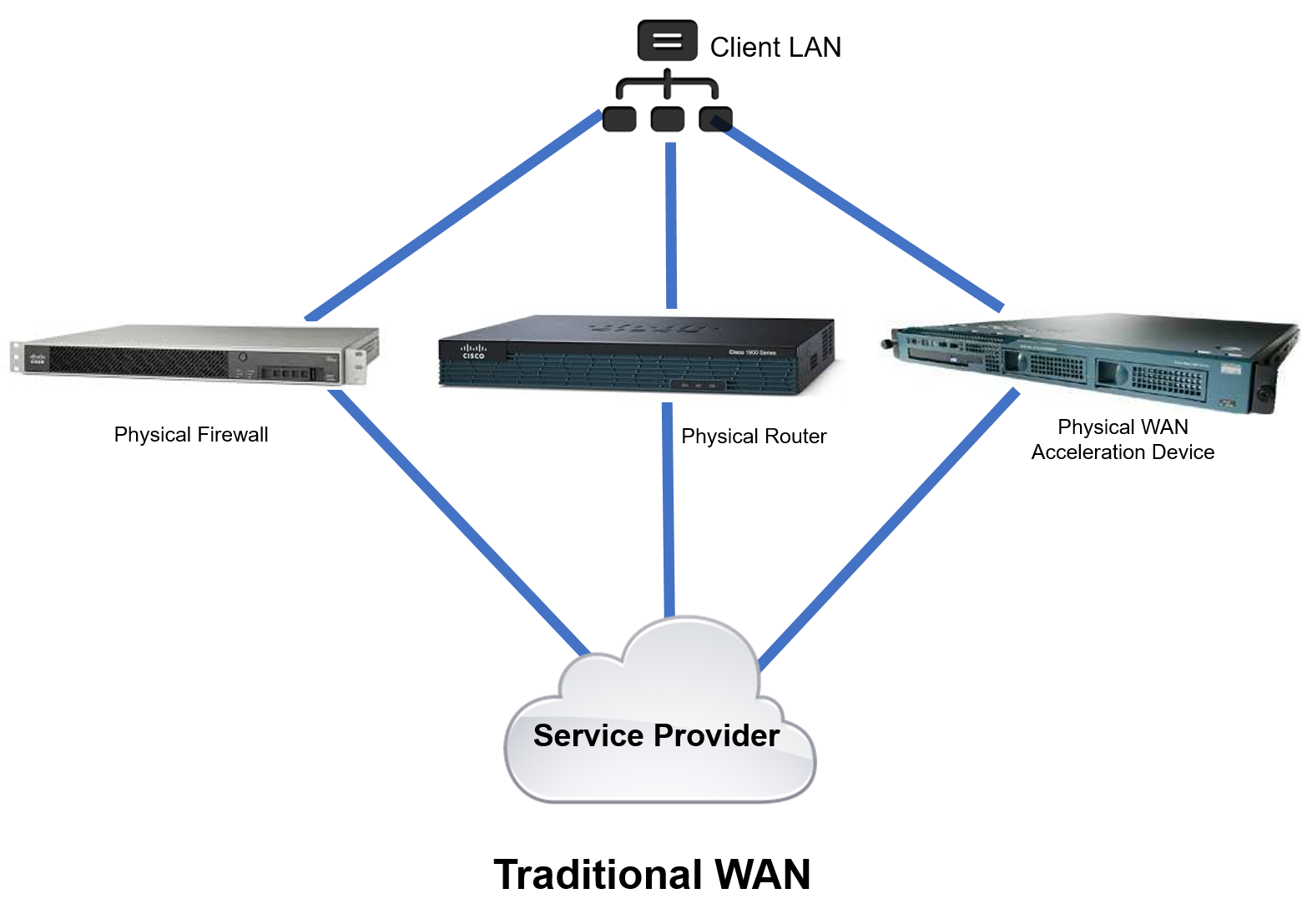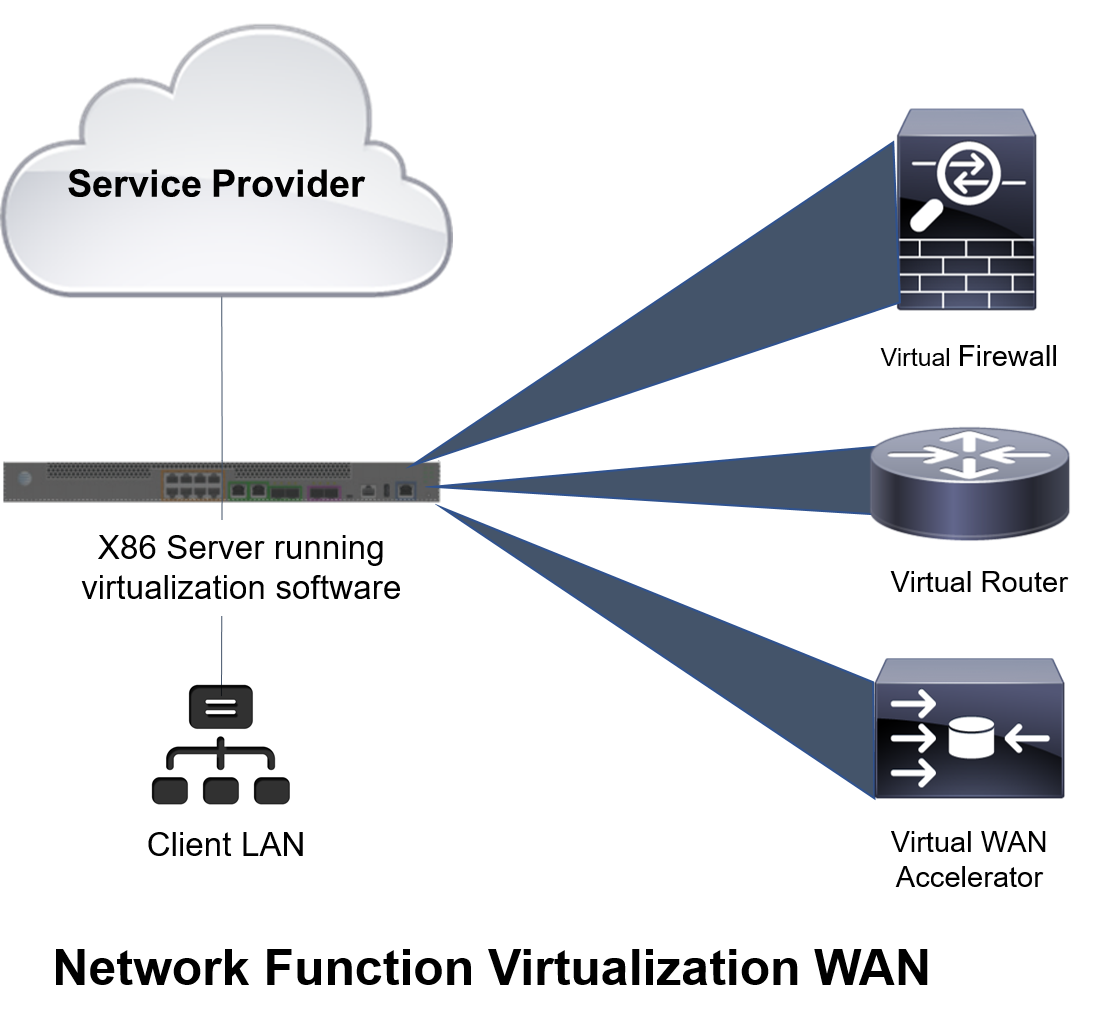For over a decade, organizations have been moving from an environment where a single server provides a single function to a collection of virtualized servers. This has resulted n higher utilization of the physical hardware, simplified ongoing administration, and provided higher levels of availability as a result of the native redundancy mechanisms in most virtualization suites.

The WAN has followed the legacy model of separate pieces of hardware purchased for different functions for decades. This might include a separate WAN router, firewall, and WAN acceleration appliance for each location. Each piece of hardware may be from different vendors with different support requirements, maintenance contracts, and interoperability concerns. Designing for this solution requires coordination with not only the service provider but potentially with multiple internal teams to provide connectivity and to define configuration requirements. Ongoing upgrades require modification of three different pieces of hardware. If unexpected traffic growth occurs, all three pieces of hardware could require a forklift upgrade. Supporting this environment will require configuration of each element along with knowledge of each hardware platform.
In NFV, a single x86 server running virtualization software is used to deploy multiple virtual appliances. The requirement for multiple pieces of hardware is replaced by a single x86 server running each of the virtual machines. In the case of service provider NFV network, the x86 servers run a hypervisor that connects back to a central management console. This allows for management of all devices from one location while providing regular updates and additional features. The provider offers a variety of different services from different vendors and the virtual service can be deployed rapidly. Due to the virtualization environment, the solution provider can deploy new services to a user quickly while managing the hardware centrally. Furthermore, this can be automated which reduces the requirement for carrier interaction in provisioning new services.
NFV FAQ
- What is Network Function Virtualization?
- Are the service providers planning to force customers to migrate?
- What does this mean for the routers and firewalls I have purchased?
- Will I have the flexibility to manage these devices?
- Why would I want to make this change?
- How will this interact with other providers?
- Will this save me money in the long run?
We can work with you to answer these questions and show you how network function virtualization can help you save money, simplify deployment and management, and integrate new services quickly. Contact us today so we can discuss in more detail.


